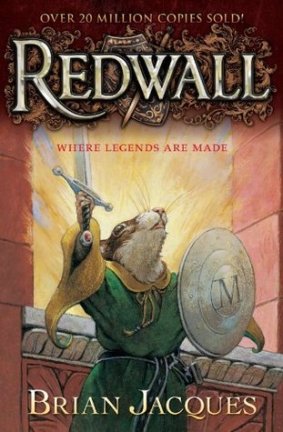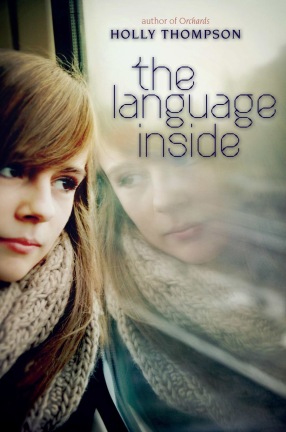I was particularly interested in the setting of the Trofimovsk prison camp (or Gulag) from the the book Between Shades of Gray. Towards the end of the book, Lina and her family get removed the labor camp in the Altai region of the U.S.S.R. to Trofimovsk, above the Arctic Circle. I was wondering, was that a real place? What was there before the prisoners arrived? How authentic are the miserable conditions described in the book?
The accounts I was able to find verify that Trofimovsk was a real place. That is, it was a piece of land with a name. In the preliminary research I have done, I have found nothing about Trofimovsk as anything other than a Gulag. There is no village there, no port, no settlement of any kind aside from the one built by the prisoners. Here is some of the information I found.
Between Shades of Gray, p. 270-272:
“In late August we reached the mouth of the River Lena. The temperature was just above freezing. The icy waves of the Laptev Sea crashed against the barge as it was moored to the shore…It was completely uninhabited, not a single bush or tree, just barren dirt to a shore of endless water. We were surrounded by nothing but polar tundra and the Laptev Sea. The wind whipped. Sand blew in my mouth and stung my eyes…Trofimovsk. The very top of the Arctic Circle, near the North Pole”
Verification Text:

Gintautas Martynaitis. “Disembarkation of Lithuanian Exiles onto Trofimovsk Island, 28 August, 1942”. Drawing. 1990s. Copy. The caption to the drawing reads: “28 August, 1942, about 500 people, exiles from Lithuania, were put ashore on the uninhabited Trofimovsk island in the delta of the River Lena. This was the Far North – with Permafrost underfoot”. Gintautas Martynaitis (1935-1999) was born in Mariampol (Lithuania) into a family of office-workers. On 14.06.1941 he was deported to Siberia along with his family: the father was separated from the family and died in Reshota camp (Krasnoyarsk Region). In 1942 the mother found herself in exile on the island of Trofimovsk (Yakutsk ASSR) with her two small children.
(From the Virtual Museum of the Gulag. http://www.gulagmuseum.org/showObject.do?object=1772160&language=2)
Between Shades of Gray, p. 276-277
“They took the men with any strength and sent them to work finishing the NKVD barracks. The boys were sent to fish in the Laptev Sea. The remainder of the women and elderly were instructed to build a jurta, a hut, for their group. We could not, however, use any of the bricks or wood near the NKVD building….We could use scraps or pieces of logs that might have floated ashore…I picked up large stones, sticks, and chips of brick. Were we really going to build a house from sticks and stone? Mother and Mrs. Rimas found logs that had washed ashore. They dragged them all the way back to our site and went back for more. I saw a woman digging up moss with her hands and using it as mortar between the rocks.”
Verification Text:
“The supervisors collected the able-bodied adolescents and men and did not let them build shelters, but sent them to another island to fish for the state.
We, the women and children, hurrying as we were best able, started to build barracks out of bricks and moss. With our bare hands we ripped moss out of the eternally frozen tundra and put it between the bricks in place of concrete: a layer of bricks, a layer of moss. The barrack had no roof. In place of a roof we covered the tip of the barrack with boards covering them with moss and sand. Each person was allotted fifty centimeters on a plank. During snow storms snow would blow in through the cracks in the ceiling and cover the people lying on the planks on the floor.”
(LITHUANIANS BY THE LAPTEV SEA: THE SIBERIAN MEMOIRS OF DALIA GRINKEVIČIŪTĖ, Litanus: Lithuanian Quarterly Journal of Arts and Sciences, vol. 36, no. 4, Winter 1990)

Gulag prisoner’s daily bread ration – Gulag Museum online exhibit
Between Shades of Gray, p. 307:
“Janina’s mother plucked the owl. We all crowded around the makeshift stove to smell it cook. “It smells like a duck, don’t you think?” said Jonahs. “Let’s pretend it’s duck.” The taste of warm meat was heavenly. It didn’t matter that it was bit tough; the experience lasted longer because we had to chew. We imagined we were at a royal banquet. “Can’t you just taste the gooseberry marinade?” sighed Mrs. Rimas.”
Verification Text:
“The “homeland” was associated with freedom and the normality of civilian life. The Lithuanian girls entertained each other in Trofimovsk by retelling – for the hundredth time – recipes of the meals that they used to have back in Lithuania. Although, from the exile’s perspective, these stories represented a time of wasteful abundance and abnormality, they also served as a collective framework through which their feelings of belonging and nostalgia could be expressed.”
(Balkelis, Tomas. Lithuanian Children in the Gulag: Deportation, Ethnicity, and Identity Memoirs of Children Deportees, 1941-1952. Lituanus: Lithuanian Quarterly Journal of Arts and Science. Vol. 51, no. 3, Fall 2005)
Between Shades of Gray, p. 333:
“”I am Dr. Samodurov.” His hand was extended, for a handshake. I stared at it, stunned by his show of respect.
We worked under his supervision. That day we each had a bowl of pea soup and half a kilo of fish. He helped us store fish for the upcoming storms and plot out a burial yard for more than one hundred bodies, including the man who wound his watch. He had frozen to death. The doctor enlisted the help of Evenks, native hunters and fishermen, who lived less than thirty kilometers away. They came on sleds with dogs and brought coats, boots, and supplies.”
Verification Text:
“And when no one had any hope left a man who saved everyone who was left from death arrived in Trofimovsk. This was Doctor Lazar Solomonovich Samodurov.
He picked his way through each barrack, sized up the entire situation, the half dead people, and began to work very energetically. He bravely entered into conflict with the Trofimovsk superiors who lived in warm houses built by us from logs, who dressed from head to foot in furs, wore only fur or felt footwear, ate bread, butter, sugar and canned pork sent to the Soviet Union by the allies from America to their heart’s content (all products, except salt, were brought by way of the Tiks port from America)…
The next day already each of us received one bowl of hot pea soup and half a kilogram of frozen fish which the doctor advised us to eat raw so as not to lose the ascorbic acid. He demanded several sacks of peas from the storeroom, let them germinate, and soon afterward brought sprouted peas to each barrack. Each of us would get a small measure of them—half a jar. He gave people several kilograms of Canadian flour as well. Little by little, the starvation and scurvy started to recede. Death also receded. Those who made it until Doctor Solomonovich arrived remained alive…
We bow down to you, Doctor Samodurov.”
(LITHUANIANS BY THE LAPTEV SEA: THE SIBERIAN MEMOIRS OF DALIA GRINKEVIČIŪTĖ, Litanus: Lithuanian Quarterly Journal of Arts and Sciences, vol. 36, no. 4, Winter 1990)

A reconstructed peat hut, a so-called yurt, from the Laptev Sea region, a place with permafrost and a temperature of up to minus 50 degrees. The windows were made of pieces of ice and the inside temperature never rose above freezing. The museum guide standing in the door is Irene Spakauskiene, who was deported to the area with her family when she was a small girl. (From The Baltic Initiative and Network)





 How I Live Now by Meg Rosoff is the story of Daisy, a 15-year-old New Yorker who is sent to live with cousins she’s never met in England. While there, war breaks out, and the cousins are separated and fighting to survive and reunite. This novel takes place in the present or near-future.
How I Live Now by Meg Rosoff is the story of Daisy, a 15-year-old New Yorker who is sent to live with cousins she’s never met in England. While there, war breaks out, and the cousins are separated and fighting to survive and reunite. This novel takes place in the present or near-future.














